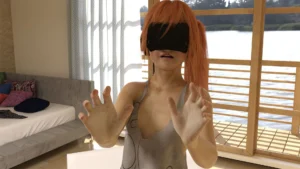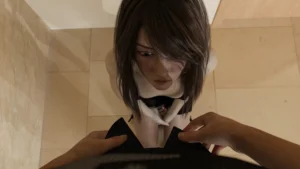
Play Bad Memories
Bad Memories review
Exploring the Unique Features and Player Experience of Bad Memories
Bad Memories is a distinctive interactive game that offers players a complex narrative combined with engaging gameplay elements. This article dives into the core aspects of Bad Memories, highlighting its storyline, character development, and player choices. Whether you’re curious about its mechanics or want to understand what sets it apart, this guide provides a comprehensive overview to enhance your gaming experience.
Understanding Bad Memories: Storyline and Gameplay
Ever started a game expecting one thing and gotten something completely different? That was me with Bad Memories. I thought I was downloading just another horror title, but what I found was a deeply personal, emotionally charged journey that stayed with me long after I closed the game. It’s not about cheap jump scares; it’s about the slow, creeping dread of revisiting a past you’d rather forget. 😨 The Bad Memories game storyline is the true star here, a masterclass in psychological tension.
At its heart, this isn’t a game about fighting monsters—it’s about fighting yourself. You play as Alex, a character returning to their dilapidated childhood home, and let me tell you, the atmosphere is so thick you could cut it with a knife. 🏚️ The genius of the Bad Memories game storyline is how it uses the environment itself as a narrator. Every creaking floorboard and faded photograph isn’t just set dressing; it’s a piece of a puzzle you’re both desperate and terrified to solve.
### What Is the Core Narrative of Bad Memories?
The core narrative of Bad Memories is a delicate excavation of trauma. You aren’t just told about Alex’s painful past; you’re forced to live it, piece by piece. The game brilliantly unfolds through a non-linear structure, where discovering a key object in the present can trigger a full-blown flashback sequence. I remember one moment, finding a broken music box on a dusty shelf, which suddenly plunged me back into a childhood birthday party—a memory that started joyful but quickly turned sour. 😥 This method of storytelling makes the Bad Memories game storyline incredibly immersive.
What sets this narrative apart is its refusal to paint in black and white. There are no purely evil villains or spotless heroes. As you uncover more Bad Memories, you realize that every character, including Alex, is flawed and human. The game asks difficult questions: Can we trust our own recollections? How does guilt shape our identity? This ambiguity is what fuels the interactive narrative Bad Memories is famous for. Your perception of events shifts constantly, making you an active participant in uncovering the truth, not just a passive observer. The emotional weight is palpable, and the Bad Memories game experience is all the more powerful for it.
### How Does Gameplay Influence the Story?
This is where Bad Memories truly shines. The Bad Memories gameplay mechanics are seamlessly woven into the fabric of the story. This isn’t a case of “walk here, watch a cutscene, repeat.” Every action you take, no matter how small, has potential consequences. The game is built on a system of player choices Bad Memories presents, which are often subtle and psychological rather than grand, moral binaries.
For instance, early on, you find a letter from a relative. You can choose to read it carefully, crumple it up in anger, or even ignore it completely. I chose to crumple it during one playthrough, thinking it was an inconsequential bit of role-playing. To my surprise, later in the game, that action was referenced, with Alex internally reflecting on their own rage and avoidance. It was a small moment, but it cemented the feeling that my player choices Bad Memories offered were genuinely shaping Alex’s psyche and the story’s direction. 🤯 This direct link between Bad Memories gameplay mechanics and character state is revolutionary.
The game masterfully avoids giving you a obvious “good” or “evil” meter. Instead, your choices influence Alex’s emotional stability, their relationships with other characters, and ultimately, which of the multiple endings you unlock. Will Alex confront their past and seek reconciliation, or will they be consumed by it? The interactive narrative Bad Memories creates means you hold the answer.
| Gameplay Feature | How It Works | Impact on Story Progression |
|---|---|---|
| Environmental Interaction | Examining, using, or ignoring objects in the world. | Unlocks key memories, reveals character motivations, and can alter Alex’s emotional state. |
| Dialogue Trees | Choosing how Alex responds in conversations, often under time pressure. | Directly affects relationships with other characters, opening or closing certain narrative paths. |
| Memory Triggers | Interacting with specific items to experience flashbacks. | Provides essential context for the plot; the order in which memories are seen can change their interpretation. |
| Sanity Mechanic | A hidden stat that changes based on your choices and what you witness. | Influences the reliability of what you see and hear, and locks or unlocks certain endings. |
### What Are the Key Features That Define Bad Memories?
Beyond its compelling story and innovative gameplay, Bad Memories is defined by a set of Bad Memories unique features that create a cohesive and unforgettable package. The most striking is its visual style. It uses a muted, almost washed-out color palette that perfectly reflects the theme of fading, painful recollections. Yet, during intense flashbacks, the colors can become oversaturated or distorted, visually representing the trauma associated with those memories. 🎨 It’s a small detail, but it adds a layer of psychological depth that few games achieve.
Central to the Bad Memories game experience is the profound Bad Memories character development. Alex is not a static protagonist. They change based on your guidance. The game doesn’t just show you a character arc; it makes you an integral part of building it. Watching Alex evolve from a fearful individual into someone who can, potentially, face their demons is incredibly rewarding. This focus on Bad Memories character development ensures that the emotional payoff at the end of the game feels earned and personal.
The user interface is another of the Bad Memories unique features worth praising. It’s minimalist and diegetic—meaning it’s part of the game world. Your inventory might be represented by items in Alex’s pockets, and notes are physically held up to read. This eliminates any disconnect between you and the experience, heightening the immersion. Combine this with a haunting, adaptive soundtrack that responds to your actions and emotional state, and you have a Bad Memories game experience that is polished, thoughtful, and deeply engaging from start to finish. 🎧
My Tip: Don’t rush. The magic of Bad Memories is in the quiet moments. Spend time examining the environment. The story is hidden in the details.
So, if you’re looking for a game that will challenge you emotionally and stay with you, Bad Memories is it. It’s a powerful demonstration of how video games can be a medium for profound storytelling, where your player choices Bad Memories integrates are the brushstrokes that paint the final picture. It’s more than a game; it’s an experience.
Bad Memories offers a compelling blend of narrative depth and interactive gameplay that invites players to explore complex characters and storylines shaped by their choices. Its unique features and immersive design make it a memorable experience for those seeking an engaging and thought-provoking game. If you’re interested in games that combine storytelling with player agency, Bad Memories is definitely worth exploring.




























